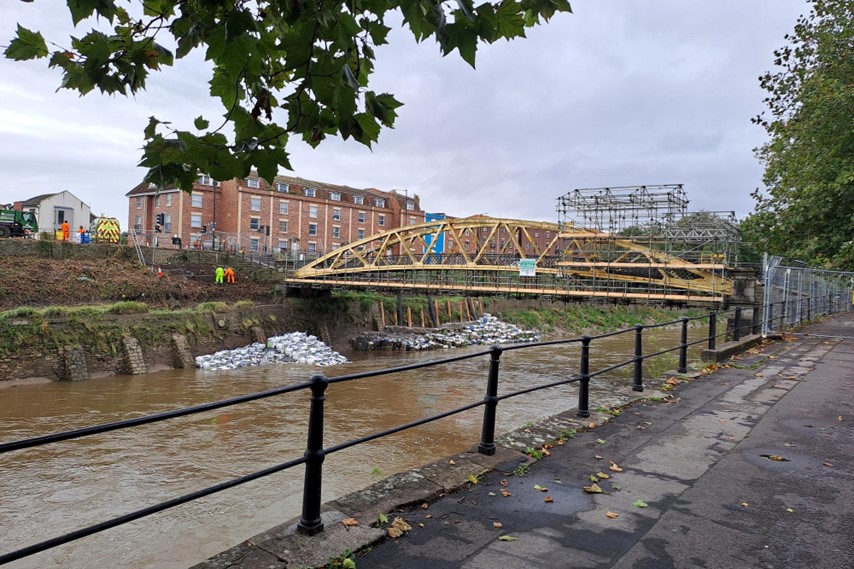7 October 2024
Partial closure of York Road to be extended for long-term river wall repairs
In a bid to reduce the risk of imminent collapse because of tidal pressure on the river wall either side of Langton Street Bridge (Banana Bridge), emergency work started in July 2024 to place more than 600 one-tonne bags on the bank of the New Cut. To make way for the lifting equipment, York Road was closed to traffic in two phases either side of St Luke’s Road.
With this emergency work nearing completion, Bristol City Council is gearing up to start the long-planned permanent repairs to the same 120-metre stretch of masonry wall alongside York Road to prevent it from falling into the river.
Starting from 28 October 2024, the long-term repairs will include:
- installing a sheet-piled retaining wall at the top of the bank to stabilise York Road
- building a concrete piled wall behind the existing river wall
- planting trees and vegetation along the stabilised embankment
For this first stage of work, York Road will stay closed between St Luke’s Road towards the Bath Bridges roundabout. Once this initial work is complete, the closure will move to the other side of the road between St Luke’s Road and Spring Street.
The diversion via St Luke’s Road will remain in place, and access to York Road will be retained for residents, pedestrians, and cyclists.
This first stage of the permanent repair work is expected to be completed in the spring of 2025. It will lead onto the second stage of the repairs, which will see York Road reopen to traffic but with one side of the road remaining closed. Temporary traffic lights will be used so road traffic can travel in both directions.
The second stage of the permanent repairs is expected to take up to one year to complete, depending on factors such as bad weather and unexpected ground conditions.
Councillor Ed Plowden, Chair of the Transport and Connectivity Committee said: “As our plans to stabilise York Road are designed and ready to go and our contractor is already mobilised on site, we have made the decision to start the permanent repairs as soon as possible. Not only is it the most efficient way to get the work done, reducing the overall length of the project, it will lower the chance of the river wall collapsing, which would cause major disruption, not to mention the very real risk to life. The work also needs to fit in with the sequencing of the repairs needed to Bath and Bedminster twin bridges.
“I understand how inconvenient the road closure is for people in the area who can’t avoid the diversion and thank you for your patience so far. We are asking that you bear with us again as we start on the permanent repairs that will safeguard York Road and the river wall for future generations.”
Working under the guidance of ecologists, the council will also start removing vegetation from both sides of the New Cut river walls on 28 October 2024. This work will start on Cumberland Road from the Create Centre and will move along the New Cut towards Bathurst Bridge. It will then cross to other side of the river to Coronation Road, starting from the Texaco garage and moving towards Bedminster Bridges.
The plants, grass and weeds that have grown up between the cracks in the bricks need to be removed so any damage to the river walls can be assessed and a plan put in place to repair them.
Spanning around 4.2 miles in total, the vegetation removal is expected to take around three months to complete. It will mean sections of pavement will need to be closed temporarily, but it should not impact motorised traffic.
Councillor Plowden added: “While it will be sad to see greenery removed, it’s vital that we repair the river walls and make sure the vegetation is not causing damage. To plan the repairs in, we must carry out a structural inspection of the brickwork, which does need to be clear of vegetation.”
All these works are part of a wider £11.9 million New Cut river walls stabilisation initiative aimed at securing and reinforcing high risk river walls along the New Cut of the River Avon and protecting the transport infrastructure alongside it.
To keep up to date with the programme, visit www.bristol.gov.uk/newcutriverwalls.
